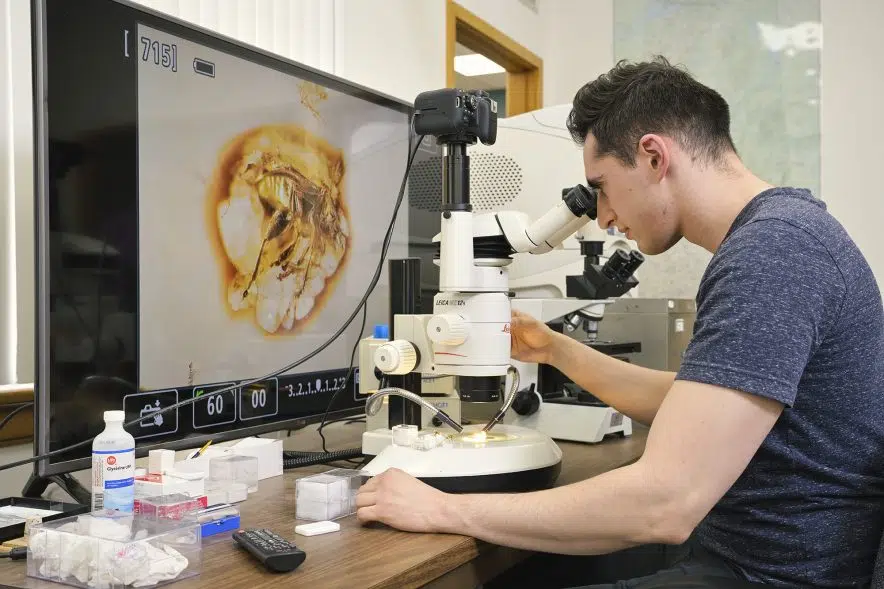A team of researchers in Regina is reporting a fantastic finding from a fossil.
In something that sounds like it’s right out of Jurassic Park, researchers from the University of Regina and the Royal Saskatchewan Museum joined others from a university in Latvia to identify what appears to be organic matter in a 44-million-year-old beetle fossil found in amber.
The findings and the methodology used have been published in Nature’s Scientific Reports.
“Using a set of advanced techniques we’ve not tried before, we took a 44-million-year-old beetle trapped in Baltic amber to see if it was possible that any preserved organic material might be present,” Jerit Mitchell, a master’s of science student and lead author of the study, said in a media release issued by the U of R.
In Jurassic Park, DNA used to create the dinosaurs was taken from mosquitoes that had sucked blood from dinosaurs before being trapped in the tree resin that turned into amber over time.
Mitchell’s team used the synchrotron radiation facilities at the University of Saskatchewan’s Canadian Light Source in Saskatoon to get high-resolution 3D micro-computed tomography (micro-CT) images of the beetle. That allowed the team to identify the possible organic compounds in the beetle.

Photographs and 3D CT models of Baltic 83, a 44-million-year-old beetle trapped in amber. (Dr. Mauricio Barbi and research team/Submitted)
Dr. Ryan McKellar, an adjunct biology professor at the U of R and the curator of palaeontology at the Royal Saskatchewan Museum, said the remains of organic chitin were detected. It’s one of the main components of the exoskeleton of insects, the university’s release said.
“This observation is of great importance, because it opens a window to the past that allows us to be able to picture these animals in a more lifelike way,” McKellar said in the release. “This allows us to be able to compare this ancient beetle to modern insects to examine evolutionary and ecological developments.”
In the release, Mitchell – who has been working on the project since he was an undergraduate student – said the team’s initial experiments were exploratory.
“The act of cracking open amber to look for organic material has not been readily attempted since the 1990s because there were experimental issues with this technique,” he said. “So, for the last two decades, this technique has really fallen out of favour. But, for a variety of reasons, such as easier access to the advanced technologies of the CLS facility, we found this type of research much more feasible in 2023.”
However, the release poured cold water on the idea of a Jurassic Park-type finding.
“While this amber-breaking research opens up a world of possibilities for future studies, the creation of dinosaurs, which disappeared 66 million years ago, from DNA found in amber remains in the field of science fiction and not science,” the release said.







